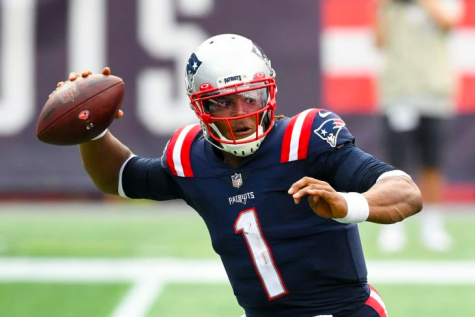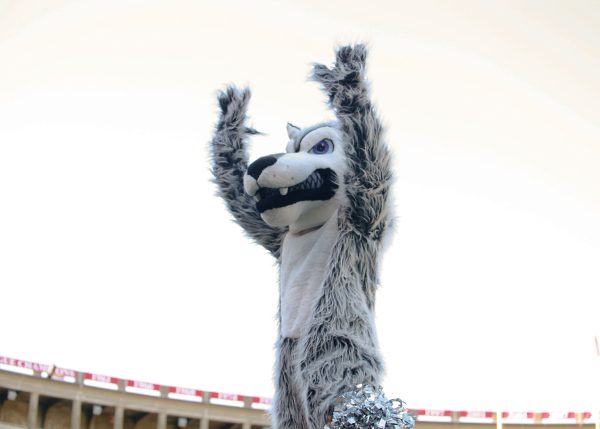Versus: Should the NFL Enforce a Bubble?

Yes, The NFL Should Enforce a “Bubble”
By Madelyn Taylor (III)
The National Football League (NFL) commenced its season back in early September and since then, numerous COVID-19 cases have been reported among players, coaches, and other staff. This has resulted in teams missing out on key players during important games, as well as multiple postponed competitions. If the NFL were to enforce a COVID-19 bubble amongst its teams, the risk of spreading the virus would decrease significantly and the season would be able to continue more efficiently.
A COVID-19 bubble would consist of isolating players and coaches from the outside world for the duration of the football season. This can either consist of smaller bubbles for each NFL team, with interaction between teams only during games, or one large bubble that holds all thirty-two teams in one location. Only players and required staff would be able to enter the bubble once it is confirmed that they do not test positive for COVID-19.
As of November, there have been more than twelve million cases of COVID-19 and over 200,000 related deaths in the United States. This virus is not to be taken lightly. With the current absence of a bubble, everyone working in the NFL, along with the people they come into contact with off of the field, is constantly at risk. The safety of everyone involved is a very big concern. Colleen Lombard (III) says: “The benefits [of a bubble] would be keeping cases down and keeping the players and staff safe.” The risk of all those partaking in the NFL season would be greatly lowered if a bubble were to be imposed.
Since the pandemic began, many other professional sports leagues across the country have implemented bubbles. The National Basketball Association (NBA), the Women’s National Basketball Association (WNBA), and the National Hockey League (NHL) all successfully used a bubble during their seasons in order to prevent COVID-19 cases. In an interview with CBS Sports, Dr. Larry Caplin, founder of DOCS health, said: “I think the NFL would benefit from adding a secondary ‘bubble,’ much like the NHL did, where they’re testing the people that players come into contact with, whether it’s at hotels or wherever. I think there’s likely to be some missteps initially, but they’ll learn from it and adjust accordingly.” Mistakes may occur in getting the bubble set up, but once it is successfully implemented, it will have many benefits.
Some people argue that there may be athletes who will not want to play if they are required to remain in a bubble for the rest of the season. Mike Florio, an American sportswriter and radio host says: “even if another cluster of players decides to tap out as 32 bubbles form, that’s better than eventually having to cancel games or entire weeks or, as a worst-case scenario, to end the season prematurely.” If cases continue to be persistent, which is very likely due to the lack of a bubble, the NFL season could end up in jeopardy.
Overall, the benefits of the NFL creating a bubble around its teams outweigh any downsides. The health of everyone involved is most important.
No, The NFL Shouldn’t Enforce a “Bubble”
By Julia Sax (IV)
With the NFL returning for their first season since the pandemic began back in March, everyone wants to know how. The big question is, should a “bubble”, much like what the NBA and NHL did for their postseasons, be enforced? The short answer is no. The NBA and NHL were successful in containing the virus, but at what costs? Athletes were separated from family members and friends for the duration of the playoff season. If the NFL were to follow in their colleagues’ footsteps, the players, coaches, and other staff members would be isolated for the 7 remaining weeks in the schedule plus the length of the postseason. The officials also tend to have other jobs during the week, so it would significantly decrease their weekly income seeing as they would not be able to leave the bubble. The fans would also be at a loss, as they would no longer be able to attend games.
Unlike the NBA and NHL, the NFL has multiple coaches for many different positions. “In the NFL, there is a 53-man roster compared to the NBA’s 15. Each position in football also requires a coach, along with assistant coaches and trainers, which pile up the number of people needed for one team” said Nhat Thai (III). The bubble would also be for the entirety of the season, not just the playoffs, meaning that all of the teams and their staff would need to be incorporated, not just a select few.
While the teams are not in a bubble themselves, the NFL has enforced bubble-esque rules. An article written for Entertainment and Sports Programming Network (ESPN) stated that “the NFL has sent teams hundreds of pages of memos with instructions for retrofitting their team facilities, limiting in-person meetings and even removing shower heads to ensure social distancing in the shower room.” These rules, among others, have allowed only 218 out of almost 8,000 players, coaches, and personnel between August 1st and November 7th, to become sick with the coronavirus. About one third of the reported cases were players.
A company called Kinexon has provided the NFL with tracking bracelets which are worn whenever players, coaches or other staff members are in a team facility. These bracelets help with contact tracing as they keep a log of who a specific individual came in contact with (as long as they are also wearing their bracelet). Kinexon bracelets also give off audio warnings when within 6 feet of another bracelet. This data makes its way back to management to help eliminate and reassess areas where people tend to congregate.
Going into a bubble would also take away from the fan experience. 19 out of 32 teams are currently allowing fans at low capacity (less than 30 percent). Should a bubble be enforced, no fans would be allowed. While it may seem odd to admit fans to a sports stadium in the middle of a pandemic, not many cases have been reported, and those that have, have not been confirmed to have come from the games. In addition, fans are seated several seats of rows apart from other groups of families. Many fans are eager to get out and support their teams including Peter Asiaf (IV) saying he “would go to a game no matter what it takes.”






